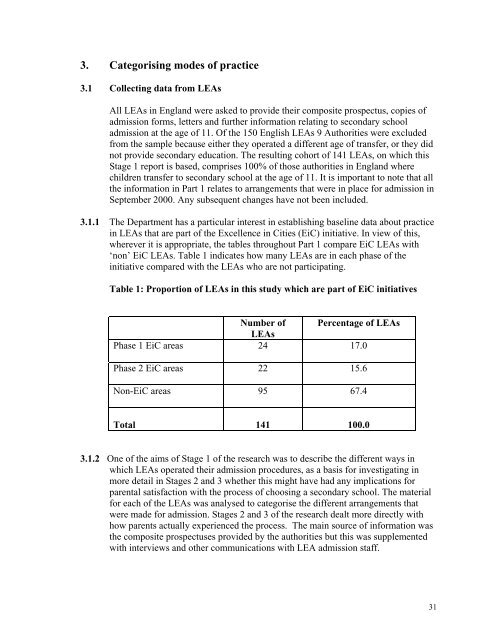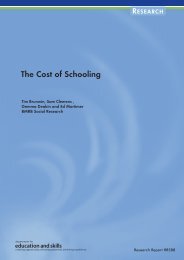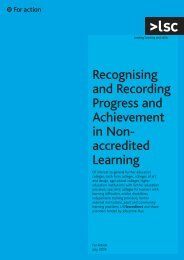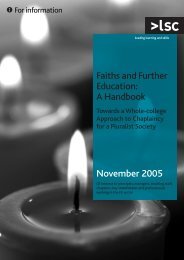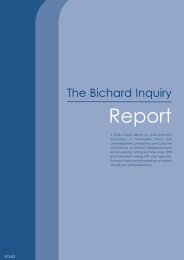Parents' Experiences of the Process of Choosing a Secondary School
Parents' Experiences of the Process of Choosing a Secondary School
Parents' Experiences of the Process of Choosing a Secondary School
Create successful ePaper yourself
Turn your PDF publications into a flip-book with our unique Google optimized e-Paper software.
3. Categorising modes <strong>of</strong> practice<br />
3.1 Collecting data from LEAs<br />
All LEAs in England were asked to provide <strong>the</strong>ir composite prospectus, copies <strong>of</strong><br />
admission forms, letters and fur<strong>the</strong>r information relating to secondary school<br />
admission at <strong>the</strong> age <strong>of</strong> 11. Of <strong>the</strong> 150 English LEAs 9 Authorities were excluded<br />
from <strong>the</strong> sample because ei<strong>the</strong>r <strong>the</strong>y operated a different age <strong>of</strong> transfer, or <strong>the</strong>y did<br />
not provide secondary education. The resulting cohort <strong>of</strong> 141 LEAs, on which this<br />
Stage 1 report is based, comprises 100% <strong>of</strong> those authorities in England where<br />
children transfer to secondary school at <strong>the</strong> age <strong>of</strong> 11. It is important to note that all<br />
<strong>the</strong> information in Part 1 relates to arrangements that were in place for admission in<br />
September 2000. Any subsequent changes have not been included.<br />
3.1.1 The Department has a particular interest in establishing baseline data about practice<br />
in LEAs that are part <strong>of</strong> <strong>the</strong> Excellence in Cities (EiC) initiative. In view <strong>of</strong> this,<br />
wherever it is appropriate, <strong>the</strong> tables throughout Part 1 compare EiC LEAs with<br />
‘non’ EiC LEAs. Table 1 indicates how many LEAs are in each phase <strong>of</strong> <strong>the</strong><br />
initiative compared with <strong>the</strong> LEAs who are not participating.<br />
Table 1: Proportion <strong>of</strong> LEAs in this study which are part <strong>of</strong> EiC initiatives<br />
Number <strong>of</strong><br />
LEAs<br />
Percentage <strong>of</strong> LEAs<br />
Phase 1 EiC areas 24 17.0<br />
Phase 2 EiC areas 22 15.6<br />
Non-EiC areas 95 67.4<br />
Total 141 100.0<br />
3.1.2 One <strong>of</strong> <strong>the</strong> aims <strong>of</strong> Stage 1 <strong>of</strong> <strong>the</strong> research was to describe <strong>the</strong> different ways in<br />
which LEAs operated <strong>the</strong>ir admission procedures, as a basis for investigating in<br />
more detail in Stages 2 and 3 whe<strong>the</strong>r this might have had any implications for<br />
parental satisfaction with <strong>the</strong> process <strong>of</strong> choosing a secondary school. The material<br />
for each <strong>of</strong> <strong>the</strong> LEAs was analysed to categorise <strong>the</strong> different arrangements that<br />
were made for admission. Stages 2 and 3 <strong>of</strong> <strong>the</strong> research dealt more directly with<br />
how parents actually experienced <strong>the</strong> process. The main source <strong>of</strong> information was<br />
<strong>the</strong> composite prospectuses provided by <strong>the</strong> authorities but this was supplemented<br />
with interviews and o<strong>the</strong>r communications with LEA admission staff.<br />
31


